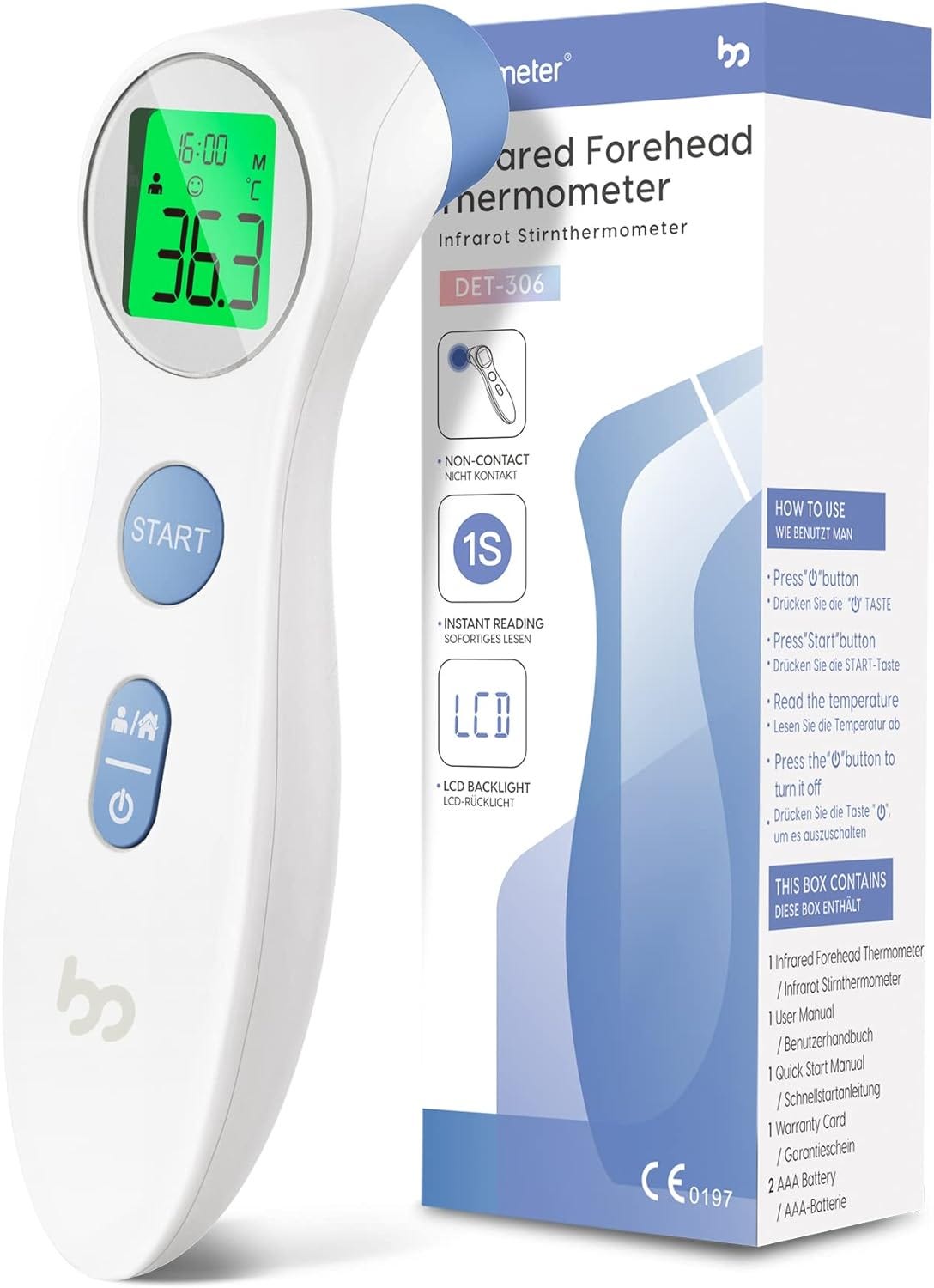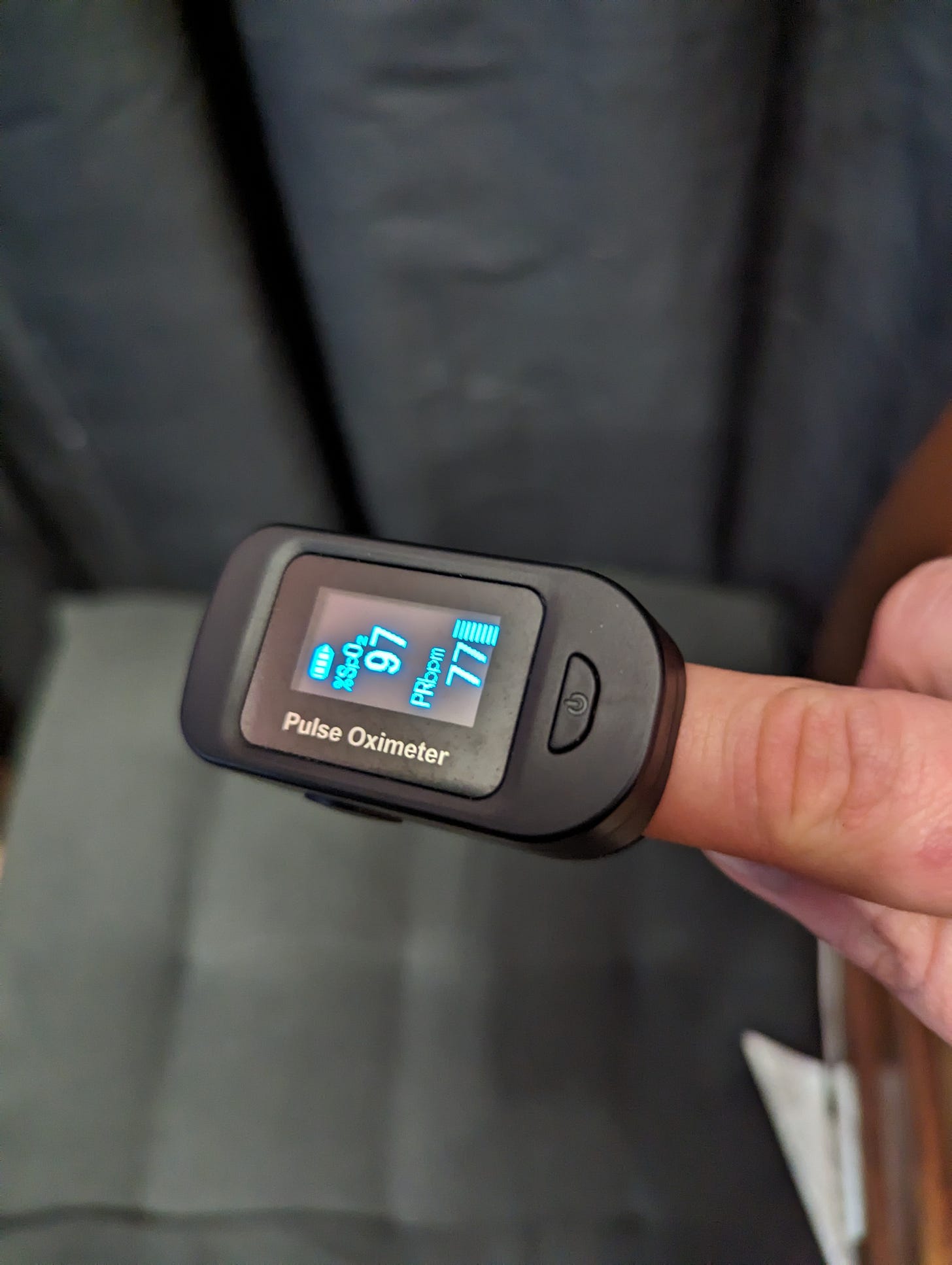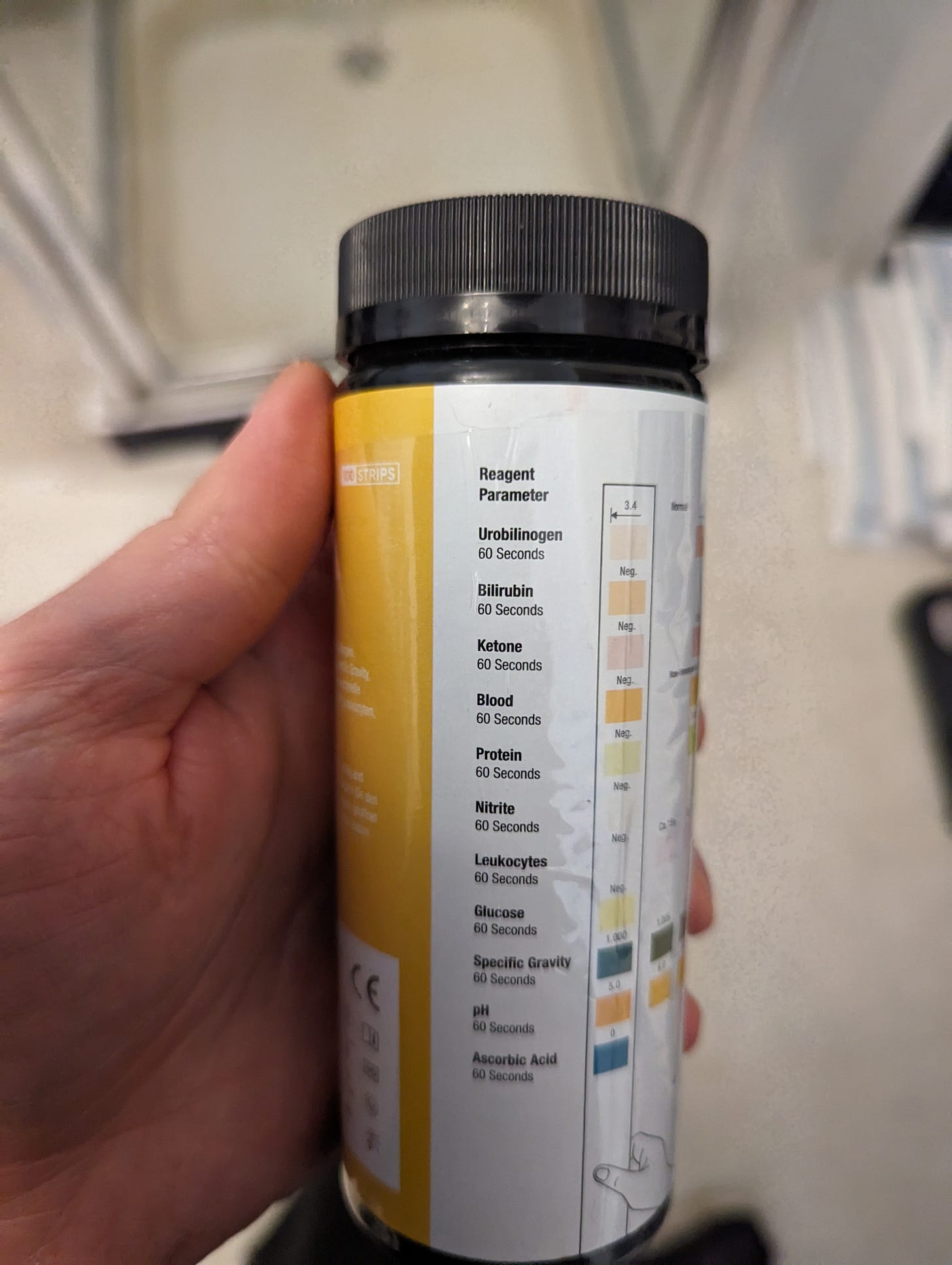Diagnosis Data
Adding these four relatively inexpensive tools to supplement your home medical kit can help better inform you, and even improve when and how you get professional medical help.
Knowledge is Power
The NHS is under extreme pressure in the UK, and ambulance and A&E waiting times can be horrendous here in rural Scotland. In the US, an ambulance may cost thousands, so people may be unwilling to call one.
Patients getting GPs to take symptoms seriously or at face value can also be an issue. People may have video calls with Doctors or call a non-emergency advice line like NHS 24 - and the advice they can give is only as good as the information you can provide. With long-term chronic illnesses such as Long Covid, you may be simply self-managing and tracking symptoms.
I'm not a medical expert. Still, I have taken several first aid courses - British Heart's qualifications to be a first-aider at work, a mountaineering first aid course, and a lot of the basic first aid is don't make things worse until help arrives.
So whether you have a health niggle at home, are speaking to a non-emergency helpline, are researching or tracking your own symptoms, or are dealing with a life-threatening emergency - These diagnostic tools could make a critical difference in these situations.
Digital Thermometer
These can start from £5 and are totally worth it. Getting an accurate temperature with an old-fashioned thermometer can be a skill, but there is always the risk of them breaking and releasing mercury; they need to be sterilised between people, taking time to get to the temperature.
Different types are available, such as ear thermometers - or this model, which is simple to use, colour-coded, and is no-touch, taking a reading from a forehead. That means if you are hosting a children’s birthday party, or an adult party for that matter, you can temperature check for infected guests.
Blood Pressure Monitor
This OMRON monitor is the same as used in many GP surgeries. As well as blood pressure, it shows pulse and if you have an irregular heartbeat.
A digital blood pressure monitor is a device used to measure blood pressure, providing an easy and accurate way for individuals to check their blood pressure at home. Understanding how it works and what it shows can help you keep track of your cardiovascular health.
How it Works:
Cuff Inflation: The monitor comprises a cuff you wrap around your upper arm. When activated, the cuff inflates automatically. You need to align it correctly and have it level with your heart.
Measurement: As the cuff inflates, it tightens around your arm. The monitor then measures the pressure exerted by your circulating blood on the walls of your arteries. This process is automatic and usually takes about 30 seconds.
Digital Display: Once the measurement is complete, the monitor displays your blood pressure reading in two numbers. The higher number (systolic pressure) represents the pressure in your arteries when your heart beats. The lower number (diastolic pressure) represents the pressure when your heart rests between beats.
Pulse Rate: Most digital blood pressure monitors also display your pulse and blood pressure readings.
Irregular Heart Beat: If your heart rate varies by more than 25% over the time the machine takes your pressure, it will flag an arrhythmia. These may be nothing to worry about or serious, so they should be checked out.
What it Shows:
Low Blood Pressure (Hypotension): Readings consistently below 90/60 mmHg might indicate hypotension, which can cause dizziness or fainting.
Normal Blood Pressure: A typical normal reading is around 120/80 mmHg, but this can vary slightly from person to person.
High Blood Pressure (Hypertension): Readings consistently above 120/80 mmHg may indicate hypertension. This condition can lead to heart disease or stroke if not managed.
Word of warning - I have had smartwatches that claim to measure and show blood pressure, but they don't.
Pulse Oximeter
A pulse oximeter is a small, typically clip-like device that helps measure the oxygen saturation level in your blood. It's a simple, non-invasive, and quick way to monitor how well oxygen is being sent to parts of your body furthest from your heart, such as the arms and legs.
It clips onto the finger and shines a light through it; monitoring that light, it can measure your pulse and "Oxygen Saturation", which should be above 95%
If your oxygen is lower than this, you can boost it by breathing from an oxygen canister. You can buy ones with a mask-type top that you can directly huff on.
Urine Reagent Test Strips
There are some fancy versions of these that you take a photo of, and it makes recommendations in an app on supplements and things to take. However, they can be costly, whereas you can get these cheaply (100 for £10) that measure more things!
You pee on the stick, wait 60 seconds, and then measure the colour against a chart. It's not digital- precise, there's some judgment in it, but compared to waiting for a GP appointment and then booking in for tests and waiting for results - this could give you a head start.
This brand measures 11 different things.
Urine reagent strips are a valuable tool for monitoring various aspects of your health. They are simple to use and can provide quick insights into your body's functioning. Here's a brief overview of what each component measured by these strips can indicate:
Urobilinogen: This is a by-product of bilirubin reduction. Normal levels in urine are a good sign, but elevated levels can indicate liver diseases such as hepatitis or cirrhosis, while deficient levels might be seen in cases of bile duct obstruction.
Bilirubin: Normally not present in urine, bilirubin can appear when the liver is not functioning correctly, such as in liver disease or blockages in the bile ducts.
Ketones: These are produced when the body burns fat for energy. They're usually absent in urine, but high levels can occur in conditions like diabetes, when the body can't use glucose properly, or during prolonged fasting or starvation.
Blood: The presence of blood in urine can be a sign of various conditions, ranging from urinary tract infections to kidney stones or more serious issues like kidney disease or bladder cancer.
Protein: Typically, there's very little or no protein in urine. Increased levels can be a sign of kidney disease, which needs further investigation.
Nitrate: This is often used to indicate urinary tract infections (UTIs), as certain bacteria can convert nitrate to nitrite.
Leukocytes: These are white blood cells. Their presence in urine can indicate an infection in the urinary tract.
Glucose: Usually, glucose is not present in urine. If it is, it might indicate diabetes, as it suggests the body is not regulating blood sugar levels properly.
Specific Gravity: This measures the concentration of all chemical particles in your urine. Abnormal levels can indicate conditions like dehydration, kidney disease, or urinary tract issues.
pH: This shows the acidity or alkalinity of urine. Abnormal pH levels can be a sign of various conditions, including kidney stones or UTIs.
Ascorbic Acid: High levels of ascorbic acid (vitamin C) in urine can interfere with the accuracy of some of the other tests, particularly glucose and blood.
These strips are a screening tool and not a definitive diagnostic method. Abnormal results should be followed up with a healthcare professional for accurate diagnosis and treatment.
Watch out for Dr. Google
So there's a danger with all this information you might type it into Google, go down a rabbit hole, and wind up with the wrong conclusions - However - if you go into a GP armed with data, it could help put them on the right track sooner, it could reassure you or help rule out issues - allowing you to distinguish between a panic attack and a heart attack, or if on the phone for emergency help, and you can be reading off the pulse and oxygen levels it could help them give you the best advice, or triage you for faster assistance.
There are other tools as well I might expand on, like blood-glucose monitors, but I think the above basic tools which can give you key medical metrics are useful to have in anybody’s kit.








